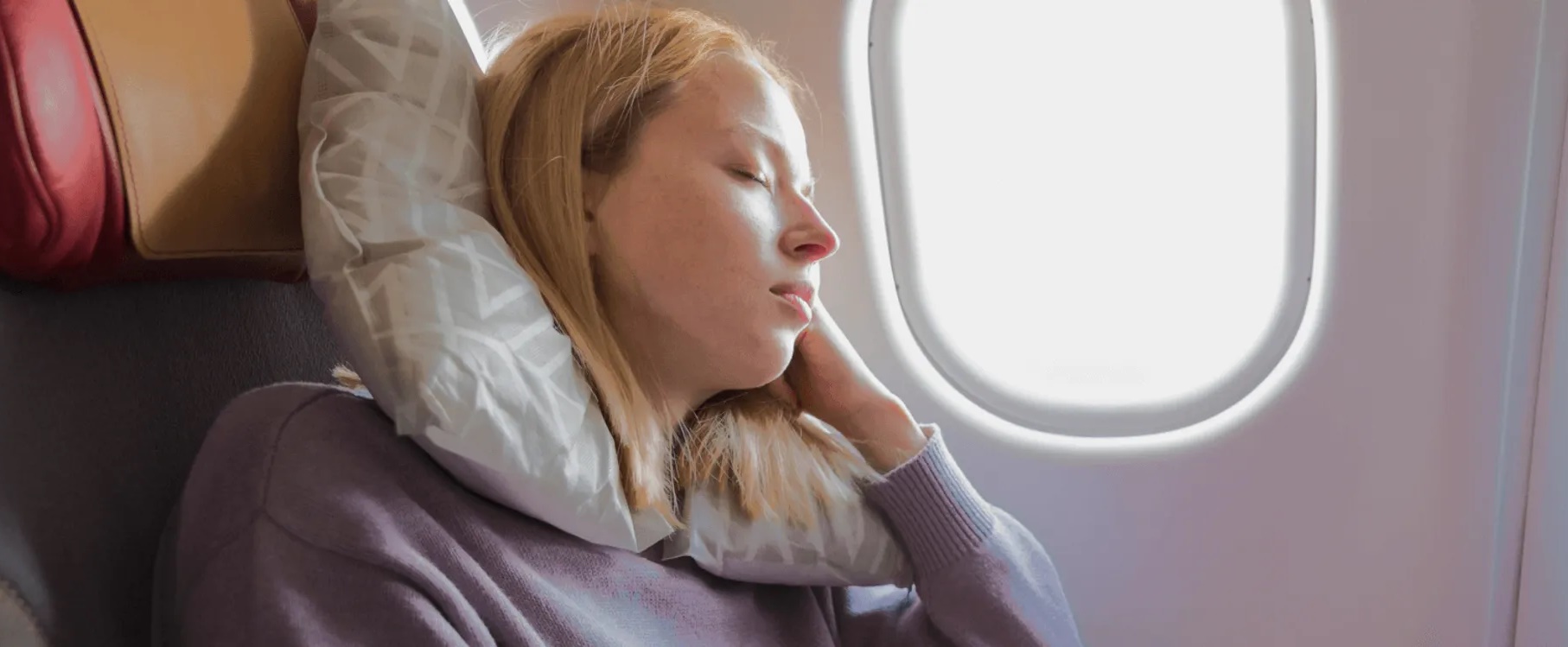8 essential tips for long-haul flights
For many travelers, a long-haul flight means arriving at their destination completely exhausted, no matter what time of day the plane lands. Long-haul flights tips

For many travelers, a long-haul flight means arriving at their destination completely exhausted, no matter what time of day the plane lands. With these tips for long-haul flights, you will not only arrive relaxed, but also be ready to plunge straight into the adventure.
1. Take as many naps as possible
Sleeping during a flight is the best way to arrive as refreshed as possible. While it may be tempting to take advantage of the inflight entertainment program and jump into a movie marathon, it’s best to spend the flight time giving your body a good night’s sleep. Be sure to pack an eye mask, travel pillow, and noise-cancelling earplugs in your carry-on to help you fall asleep.
2. Do some exercises and shower before boarding
A workout and a quick shower before boarding are extremely relaxing. This allows you to release excess energy that can make time in your airplane seat seem eternal. According to sleep researcher Dr. Matthew Walker, author of Why We Sleep, exercise and a hot shower are key to quality sleep.
3. Put on something comfortable
Your outfit during the flight should be warm and comfortable. Finding a comfortable seating position can be difficult enough. But if it also pinches and tweaks or cuts in and constricts, falling asleep quickly becomes an impossible task. Even after a holiday in the warmth, you shouldn’t underestimate the air conditioning on the plane, because it makes many a passenger shiver quickly and, in the worst case, causes a nasty cold. With the proven onion look you are prepared for any temperature!
So it’s better to leave your flip-flops in your suitcase and instead wear a thick sweater, a cozy cardigan, loose pants or leggings, compression stockings and closed-toe shoes on the plane, which are both practical and comfortable on and off the plane. Spare masks, a second pair of socks and a change of underwear will also help you stay fresh and prepared in the event of unexpected delays.
4. Think of travel-friendly snacks
The new travel era is having a not inconsiderable impact on in-flight service. Some airlines have reduced the catering on board in Corona times and the opening hours of shops and restaurants have been adjusted at many airports. It is therefore best to bring your own healthy snacks – vegetable sticks, grapes, crackers or pretzels – so that you are well prepared in the event of a sudden hunger attack. Avoid foods that require cutlery, that are easy to spill, or that have an unpleasant smell.
5. Drink, drink, drink!
Drinking enough water is the be-all and end-all in order to look as fresh as possible at the destination and not to stumble around completely dehydrated. While some travelers avoid drinking too much to avoid rushing to the bathroom, experts from the American Aerospace Medical Association recommend drinking at least 8 ounces of water per hour.
Moisture loss can also affect the skin and eyes. Humidity high above the clouds is usually very low, only around 20 percent. This quickly dries out the skin and can cause eye irritation. Contact lens wearers should fall back on their glasses, while a small bottle of moisturizing cream will keep skin supple during air travel.
6. Choose your seat wisely
Whether you prefer a window seat or an aisle seat (we know no one likes the middle seat), it may be worth investing a few bucks in a more comfortable seat. Both window and aisle seats have their pros and cons. You will hardly be jostled at the window or asked to get up to let the person sitting next to you go to the toilet. You can also lean against the window while sleeping. On the other hand, if you sit in the aisle, you not only have more legroom, but you can get up whenever you want to stretch your legs or take a bathroom break.
If possible, avoid choosing a seat near the restrooms or family areas. If legroom is important to you, seats at the front of the plane or near the emergency exits offer a few extra inches. In order to be able to stretch out your feet comfortably at any time, you should leave the already narrow foot space under the front seat free. You can easily place your hand luggage in the luggage racks.
7. Regularly stimulates blood circulation
Sitting for long periods can slow blood flow in the veins and cause fluid retention in the legs. In unfavorable cases it can even lead to thrombosis. Therefore stretch your neck, shoulders, wrists and ankles regularly to prevent pain. At best, treat yourself to a small massage: knead your calves regularly, always stroking from the ankles to the knees to empty the veins towards the heart. Since the on-board service usually shakes you awake anyway, you can also use the short sleep break for a stretch routine. On the other hand, if you go to the restrooms, you can take an extra lap down the aisle to wake up those tired bones.
8. Don’t forget the travel hygiene kit
The last few years have changed the way we travel. While most major airlines and airports have taken additional health, hygiene and cleaning measures, it doesn’t hurt to take a few precautionary measures yourself. So pack a few spare masks, hand sanitizer and disinfectant wipes in your hand luggage before boarding.
Once you have arrived at your seat, you can preventively wipe all surfaces in your environment, such as armrests, the tray table, the screen of the inflight entertainment system, the window area and the buttons above your head with an anti-bacterial wet wipe.
Travel News

